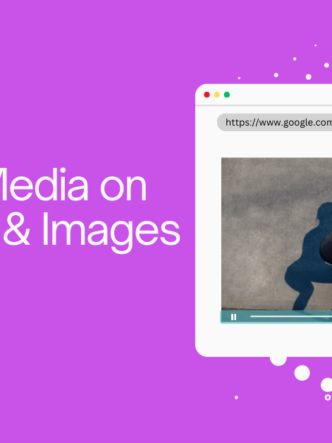Publishing isn’t what it used to be.
Local newspapers are dying. Authors are increasingly frustrated by the lack of control they have over their own works. And in lieu of print magazines, more and more businesses are instead opting to publish their content online. Why? Because the Internet—not paper—is now the primary conduit for distributing information to the masses.

A universal shift away from print to digital media
It’s not the end of print though; the medium has simply evolved into what we’ve all come to know and love today, the culmination of a decades-long transformation spurred by innovation, technology, and change:
Digital publishing.
Digital publishers think outside the box and embrace disruptive technologies that help them enter new markets. It’s not easy, but publishers have kept up with the change by exploring new ways to best allocate their time and money.
But what else is fueling digital transformation?
Part of the answer lies with the largest generation in the modern U.S. workforce:
Millennials.
93% of Millennials who turn ages 23 to 38 this year own smartphones (source). They’re driving technological change around the world and businesses are adopting agile operating models to keep pace. Business agility is critical to success; 68% of companies rate it as one of the most important initiatives when it comes to digital transformation.
In late 2019, the coronavirus pandemic erupted across the globe. Many industries were affected by the pandemic, with the publishing industry being no exception. COVID-19 spotlighted the flaws inherent to print circulation which itself relies on 3 important elements in order to survive:
Printing machines, distributors, and open stores.
National containment measures like the lockdowns we’ve all seen and experienced destroyed every link of that delicate chain. And the results were devastating. As a consequence more publishers are opting to digitize their print materials, including publications and entire archives.
“Covid-19 is accelerating innovation that was long overdue and likely to happen anyway”, Amol Rajan from BBC News.

More reasons for going digital
Market-crippling pandemic aside, there are other reasons businesses should embrace digital transformation. Here are a few:
Changing reading habits
‘Patient’ is not what comes to mind when thinking of the typical modern consumer of media. Consumers today expect instant access to the information they’re looking for. Mobile technology has disrupted every dynamic of the face-to-face customer service model. It’s affordable too, which means mobile tech has essentially reworked the digital economy’s content creation and consumption paradigms. Digital media won’t stop evolving as long as consumers continue using technology to read.
Declining print ad revenue
The Wall Street Journal reported that many newspapers had already cut costs to cope with the worse-than-expected ad revenue decline. The most vulnerable publishers are those that aren’t affiliated with big-name empires, rely heavily on advertising, and lack cohesive digital strategies.
High cost of paper
According to APDSP Today, several factors are driving price increases for paper: demand from foreign countries, rising production costs, increasing transportation costs due to a strong pre-COVID-19 economy, and the closing of some paper mills.

The benefits of digital media
over print publishing
- Lower production costs: Web publishing is a cost-effective solution for anyone who’s on a budget. Online media can be distributed to audiences at no extra charge to publishers.
- Reduced production times: Digital publications can be created, launched, and updated faster. The Internet’s accessibility also means that online content can be consumed by anyone, anywhere, and from any device.
- No losses from unsold magazines!
- More revenue from ad hosting: Digital marketing can open new revenue streams. Online advertising lets publishers passively generate more income by showing ads to targeted audiences. And it’s much cheaper than print because the internet offers more space for both low cost and free advertising to thrive in.
- Interactivity and higher engagement: Interactivity is synonymous with digital publishing. Embeddable videos, audio, photo galleries, and feedback plugins keep readers consistently engaged while providing a more memorable viewing experience than print.
- Global distribution and virality: Online content can go viral overnight. If people really love your stuff, they’ll even help you market your business or products for you.
- Easy distribution: Digital distribution is fast, easy, and effective. Channels frequently leveraged by publishers include social media, link sharing, embedding, online newsstands, and branded apps.
- Selling: publishers can sell entire publications, subscriptions, and single issues directly from digital publishing platforms. Thanks, Internet.
- Analytics: Web media is trackable. Tracking data enables publishers to see who views their content and from where. It can also reveal which types of content generate the most engagement.

Shifting away from print?
Important steps to consider
Transition from print to digital is an important milestone for every publisher. To smoothen the process, a well-thought-out action plan is needed.
Here are some recommendations:
- Find a digital publishing platform that works best for you and your business. It will take some time. But the payoff is absolutely worth it. Ideally, you’ll want an all-in-one business platform that offers practical digital publishing solutions. Look out for these key features, too:
- Simplified PDF to digital conversion
- Customizable publications (embeddable interactive elements, rich media, links, subscription and lead generation forms, pop-ups, etc.)
- Branding (logo, brand colors, images, typography)
- Easy integration with different payment systems and sales tools
- Integration with other CRM and email marketing tools
- Distribution options
- Tracking analytics (content performance, reader behaviour, traffic sources)
- Subscribe for a test account – most platforms offer free trials
- Book a demo call and get all your questions answered
- Create your first digital publication, test all features, you will be using
- Create a detailed timesheet for moving from print to digital
- Think about the new opportunities that digital publishing is offering and how you can benefit from them
- Create a media kit
- Inform your business partners, advertisers and affiliates about the shift

Publications that successfully transitioned to digital
Premiere Magazine is presented by Adrienne Brandes-one of the most successful real estate professionals in Orange County. A certified negotiator with a Masters degree in counseling psychology and a background in marketing and public relations, Adrienne brings to the table a wide array of skills that allow her to secure the best results for her clients on any given deal.
GORV magazine is all about the motor lifestyle. Whether you are touring with a caravan, motorhome, camper trailer or even a fifth wheeler, a friendly piece of advice can make all the difference to a safe, enjoyable trip. That’s where GORV magazine comes in. With RV reviews, technical tips and lots of video, GORV aims to make your life on the road as entertaining and informed as possible.
Giants of the Road is the official magazine of Nooteboom Trailers BV, a family business founded in 1881, is an international organisation offering their customers complete solutions in the field of abnormal transport. Nooteboom is always striving to improve by continually investing in the best solutions for their customers.

Final thoughts and takeaways
The publishing sector is evolving. And, in many ways it’s accelerating toward its full potential faster than ever before. Disruptive technology has shown the publishing industry what it should have known already. It has exposed the unsustainability of traditional magazine and newspaper business models. It has highlighted the importance of digital transformation. And for businesses struggling to survive, it has proven that digital publishing platforms are the future.









